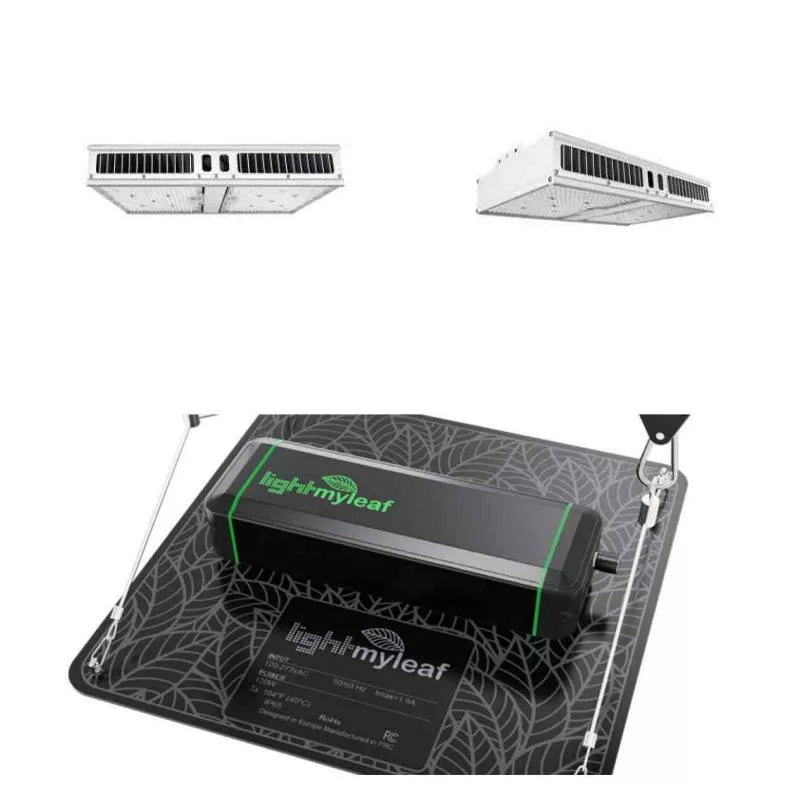No, LED grow light and UV light are not the same. Although some LED grow lights may emit some UV radiation depending on the specific model.While both types of lights can be used for plant growth, they emit different wavelengths of light and serve different purposes.
LED grow lights are designed to provide the specific light spectrum that plants need for photosynthesis and growth. They typically emit a combination of red, blue, and sometimes white light, which are the primary wavelengths that plants utilize for various stages of growth. LED grow lights can be customized to provide the optimal spectrum for different plant species and growth phases. They are energy-efficient, long-lasting, and can be adjusted to different intensities.

On the other hand, UV lights emit ultraviolet wavelengths, specifically UVA (320-400nm) and UVB (280-320nm). UV light is not typically used as the main source of light for plant growth. While plants do have some degree of UV sensitivity and may exhibit certain responses to UV light exposure, prolonged or excessive UV exposure can be harmful to plants, causing damage to their DNA and leading to stress or burn.
UV lights are more commonly used for specific purposes, such as pest control, sterilization, or for inducing certain plant responses like increased production of certain compounds. They are not typically used as the primary light source for promoting overall plant growth.
LED Grow Light
Provides full spectrum light, including different wavelengths essential for plant growth, primarily focusing on visible light (red, blue, white, green).
Designed to promote photosynthesis and stimulate various plant growth processes.
More energy-efficient and generate less heat compared to traditional grow lights.
Widely used in indoor gardening and greenhouses.
UV Light
Primarily emits ultraviolet radiation, which is invisible to the human eye.
It has three main types: UVA, UVB, and UVC.
UVA: In low doses, can benefit plants by increasing stress tolerance and secondary metabolite production. High doses can be harmful.
UVB: In very low doses, can stimulate plant defenses and improve nutrient uptake. Higher doses can damage plant cells.
UVC: Primarily used for sterilization and not recommended for plant growth due to its high damaging potential.
Therefore, while some LED grow lights might include some UVA or UVB LEDs for their potential benefits, their primary focus is still on providing the full spectrum of visible light that plants need for photosynthesis and overall growth. UV lights, on the other hand, are specifically designed to emit ultraviolet radiation, which can have both positive and negative effects on plants depending on the type and intensity of exposure.
LED grow lights provide the necessary light spectrum for plant growth, while UV lights emit a specific range of ultraviolet wavelengths with different applications.
Click to view articles you may be interested in:
News
How to Know if LED Flood Lights Are Good Quality?
In today's market, LED flood lights have become a popular choice for [...]
News
Can TUBU Customize the Spectrum of LED Grow Lights?
In traditional agriculture, sunlight is the only source of light for plant [...]
News
Why Are LED Grow Lights Priced So High?
In the realm of indoor agriculture and horticulture, LED grow lights have [...]
News
Quantum Board LED Grow Light Wholesale CE ROHS ETL Approved
In today's highly competitive indoor grow lighting market, consumers are increasingly demanding [...]
News
New Trend of LED Grow Light Wholesale
How can TUBU help you seize the high ground of photosynthetic economy?Under [...]
News
Wholesale Purchase LED Plant Lights Guide to Avoid Pitfalls
In the field of plant lighting, the innovation of LED technology is [...]
